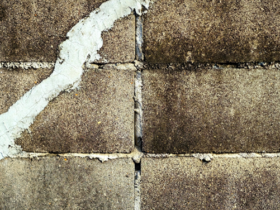If you’re looking to buy a house in Utah, affordability is one of the main draws of living in Provo. Your money can definitely go much further here compared to other cities. However, before you make possibly the biggest purchase in your life, you may want to double-check the little details in various parts of the home.
Remember, if you can’t access areas such as the roof, or would like to avoid any uncertainty, you should hire a professional for home inspections in Provo to cover anything you might have missed. Here’s a shortlist of where to check and what to look out for.
Lawn
Even though the lawn can make a strong first impression, you shouldn’t be looking for weeds or turf spots here. The critical features to look out for are drainage and grading. If the landscapers got the job done right, then water flows away from the home.
If not, you could be looking at water damage as it seeps into your basement and foundation. New drainage and grading may be necessary to fix such a problem in the future.
Roof
The roof can be a difficult part of the house to inspect properly. You’ll want to look for signs of good maintenance and installation. Missing shingles or clogged gutters may not cause immediate problems but can lead to leaks or poor insulation down the line, which will cost you additional money to cover repairs.
Foundation and structure
Older homes tend to exhibit more signs of possible foundation issues. The forces exerted by soil expansion and contraction over the years, growth in the root system of nearby trees, and water seepage, all add up over time. It can be difficult to spot potential structural problems with newer homes.
Keep an eye out for cracks of about a quarter of an inch or wider; gaps between walls, floor, and ceiling; and doors or windows that don’t close properly.
Ventilation and insulation
One advantage of checking out homes in the cold and dry Provo winters: you can more easily tell if there are any issues with the ventilation system and house insulation. If you feel the occasional draft or get static electricity shocks, air infiltration may be a problem.
This may be coupled by a lack of maintenance or insulation in the duct system. Persistent odors in the house can also indicate poor overall airflow, which could become a problem in humid weather and lead to mold formation.
Electrical
The basics of checking for a good electrical system are simple: flip all the switches, see if each outlet is properly grounded and working, and test any appliances that are included. However, watch out for overwired panels or a lack of outlets – typically accompanied by over-reliance on extension cords or power strips.
This is common in older homes and can pose a fire hazard; you’ll need an electrician to install additional outlets to handle your expected load.
Plumbing
Be on the lookout for leaks around faucets, toilets, and the water heater. While you’re at it, make sure the heater is working properly – water temperature should be consistently in line with the thermostat, and there shouldn’t be any unusual noises.
When dealing with a forthright seller, you shouldn’t have to worry about many things. But for your peace of mind, it’s best to be certain. It won’t hurt to hire an expert for their opinion and review their report, either. Just make sure that you won’t have anything to regret or pay for down the line.










